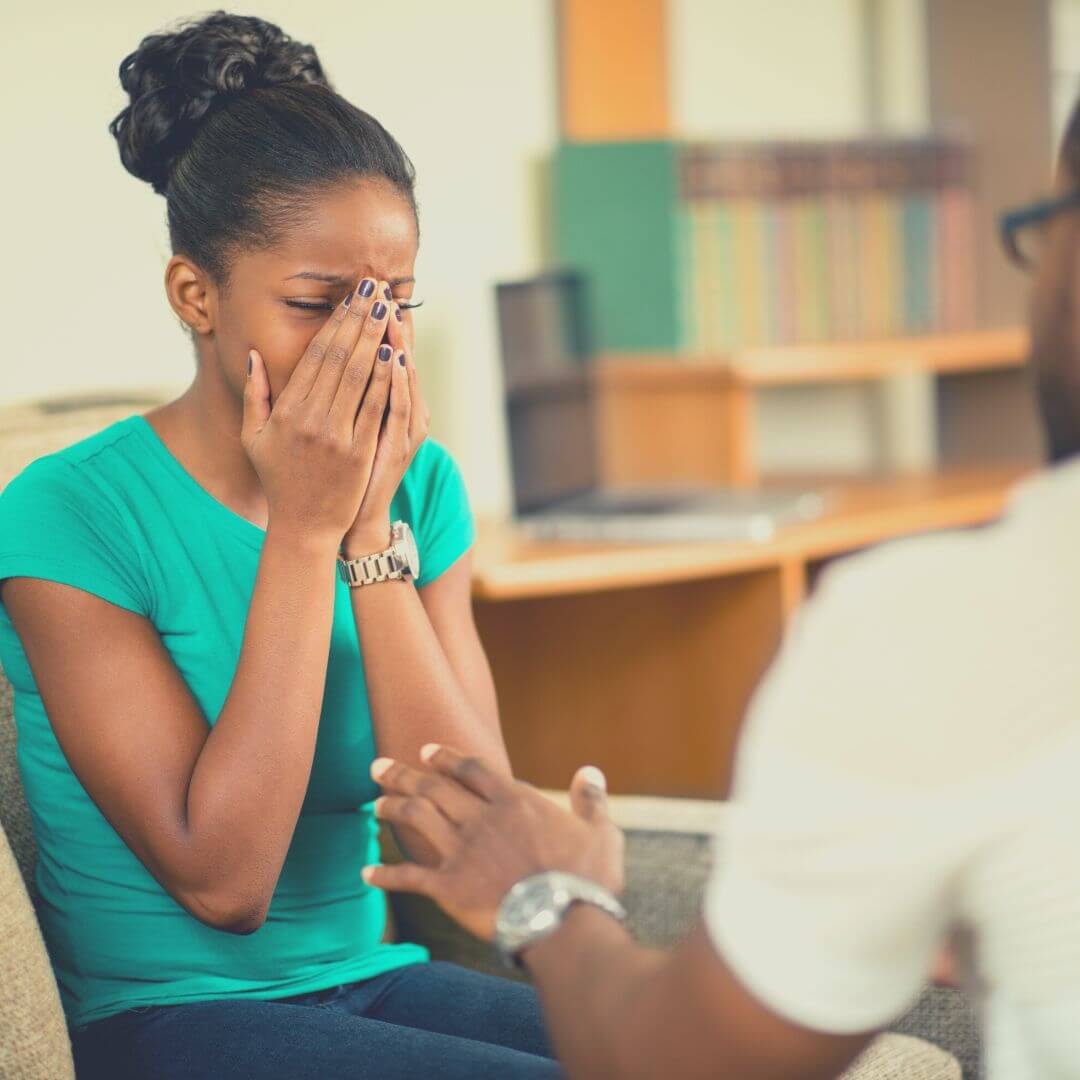Is persistent fear, phobia, or anxiety keeping you from enjoying life and nothing seems to help? You're not alone. Based on statistics reported by the Anxiety and Depression Association of America, millions of Americans are living with one or more of these conditions.
Anxiety is marked by persistent and excessive fears and worries. This may lead to panic attacks. Phobias are largely driven by irrational fears, real or imagined. These conditions are often debilitating and lead to avoidance behaviors as a way to cope.
Medication, cognitive therapy, and alternative treatments are routinely used to help reduce the symptoms. Perhaps you've tried them all without seeing any significant improvement. What about exposure therapy for anxiety? Have you considered this treatment?
Let's take a look at how exposure therapy works and why it's more effective. You'll also find resources below on locating a therapist who can help you regain control over your day.
What Is Exposure Therapy?
Exposure therapy is a psychological treatment developed to help people overcome fears or phobias that trigger anxiety by having them repeatedly confront the triggers. That is according to the American Psychological Association (APA).
The trigger can be a person, place, object, thoughts, situation, or traumatic memory, such as in the case of post-traumatic stress disorder (PTSD). Some individuals suffering from anxiety disorders, including social anxiety disorder, phobias, and panic disorders, have a tendency to engage in avoidance as a solution.
Avoiding the trigger or associated sensations is considered a flight response. However, long-term avoidance can worsen the symptoms or increase the frequency of panic attacks.
Exposing patients to their triggers represents a different treatment approach. In fact, one of several studies found strong evidence of greater effectiveness of exposure therapy in treating anxiety, phobias, fears, and panic disorder, compared to cognitive therapies.
What You Need to Know about Anxiety and Anxiety Disorders
Anxiety is a normal reaction to stress, and everyone experiences it from time to time. The response is associated with activation of the amygdala and is intended to serve as a protective mechanism, e.g., helping you avoid real danger. You may take action or flee the situation, depending on what's best in the circumstances.
Anxiety disorders are different and chronic. It is documented as the most common mental illness affecting 40 million adults in the US who are 18 or older every year. The disorder is marked by long-term symptoms including:
These symptoms result from the body's fight-or-flight response to stress and activation of the amygdala. This is a small, almond-shaped region in the temporal lobe, that also regulates fear responses, such as what emotions a person associates with certain situations and how they react. Scientists call this emotion-regulated behavior.

People with anxiety caused by day-to-day worries experience similar symptoms. However, they are temporary and quickly subside or with the help of affirmations for anxiety.
On the other hand, symptoms are prolonged in those with the disorder mainly because the amygdala stays activated due to frequent and long-term arousal.
Some individuals are easily startled and are always on the lookout for threats and danger (hypervigilance). One study, on Amygdala Activity, Fear, and Anxiety: Modulation by Stress, found that this happens from dysregulation of the amygdala.
Being hyper-alert, in addition to anxiety symptoms, can eventually start interfering with daily functioning and your overall quality of life.
Types of Anxiety Disorders Treated with Exposure Therapy
Exposure therapy falls under cognitive-behavioral therapy (CBT) and is often used for treating one or more types of chronic anxiety, or anxiety disorders. The most common types include:
Exposure therapy is also used in the treatment of post-traumatic stress disorder (PTSD) and obsessive-compulsive disorder (OCD). These mental disorders typically co-occur alongside or trigger anxiety symptoms.
What Causes Anxiety Disorders?
It's sometimes difficult for individuals to trace the origin of their symptoms. According to doctors, causes or risk factors include:
Some research suggests a connection between the disorders and dysfunction in brain circuits responsible for controlling fears and emotions. These fears can be chronic and result in specific phobias, which may occur for several reasons.
They include negative experiences that created trauma, learned behavior from parents or within your childhood environment, or changes in brain function.
How Exposure Therapy Works
Exaggerated, or relatively heightened activation of the amygdala is seen in people with social anxiety, PTSD, and other types of anxiety disorders. Researchers found the evidence during a study on the Neurocircuitry of Fear, Stress, and Anxiety Disorders.
The amygdala is believed to be responsible for processing fearful and threatening stimuli. Repeated exposure to the fear-inducer lessens the fear and avoidance responses that occur when the amygdala is activated from incorrectly perceiving something as threatening.
Let's turn our attention to the different types of exposure therapy and techniques and how they work.
Types of Exposure Therapy for Anxiety
Your therapist will determine which of the following types of exposure therapy and technique are most suitable based on your diagnosis.
1. In vivo exposure
In vivo (‘real-life') exposure therapy means the therapist will guide you, in person, to do activities that involve facing the source of the fear. For example, if fear of social interactions/situations causes you anxiety, your therapist might instruct you to give a public speech or performance.
If the anxiety is related to flying, you may need to catch a few flights to desensitize you and minimize the ‘flight' or avoidance response.
2. Imaginal exposure
Here, your therapist guides you to imagine the feared object, person, situation, or memory. For example, a patient with PTSD might be asked to re-imagine themselves in the traumatic situation and describe their sensations or feelings.

Repeated exposure to the traumatic experience in this way may work to minimize the fear and anxiety surrounding the trauma.
3. Virtual reality exposure
Virtual reality is a ground-breaking technology that enables therapists to conduct guided exposure therapy when real-life exposure isn't practical. Let's say your fear of water triggers anxiety whenever you're near waterways such as an ocean or swimming pool.
Your therapist will have you use a virtual reality screen to position yourself near or in water to reduce anxiety and avoidance.
4. Interoceptive exposure
Interoceptive exposure therapy involves getting the patient to do activities that bring on harmless symptoms related to the threat (real or imagined) or irrational fears that trigger anxiety. The patient is encouraged to sit through the discomforting sensations to help them realize they aren't harmful.
An example is stimulating racing heartbeats in a patient with a panic disorder to relieve uneasiness about things they perceive as a threat or danger.
Exposure Therapy Techniques
Here are three commonly used techniques.
1. Graded exposure
The therapist will help you build a fear hierarchy by asking you to list and rank feared activities, objects, or situations from most to least frightening. Therapy will begin with exposure to the least feared to the most feared. Exposure will also take a mild to moderate to difficult approach.
Here's an example of using the graded or gradual approach. If you’re afraid of dogs, your therapist might show you photos of dogs during the first treatment session. As your comfort level increases, you might be deliberately exposed to a dog in a cage or another type of controlled environment. Things will then progress to a point where you're asked to hold or pet a dog.
2. Flooding
This approach is the opposite of gradual desensitization. Therapists use the technique to flood their patients with whatever stimulates their anxiety. Flooding is often done through direct, immediate, and intense exposure to the situation or by describing the feared object or situation.
An example of intense exposure is immediately placing you in a swimming pool even though you have aquaphobia (fear of water). There's no opportunity to slowly develop tolerance. During the exposure session, no attempt is made to reduce your fears or help you avoid them either.
Psychologists find flooding to be quite effective, particularly for PTSD and phobias.
High-intensity exposure usually starts with the most to the least negative stimuli (worst fears to least fears) called the hierarchy approach.
3. Systematic desensitization
This approach was developed by psychiatrist Joseph Wolpe for treating anxiety and phobias. The goal is to gradually reduce or remove the fear response by individuals and replace it with relaxation. Wolpe referred to this strategy as counter-conditioning of the brain to change the reaction to anxiety stimuli.
You'll be directed to imagine yourself in related frightful situations. Next, you'll be directed to use relaxation strategies to combat the symptoms you experience. Strategies can include deep breathing, meditation, and imagining yourself in a tranquil setting, e.g., near a placid lake.
Why Exposure Therapy Helps with Anxiety, Fears, or Phobias
Exposure therapy for anxiety, fear, or phobia is helpful because it has been proven to help patients overcome their fears and lessen anxiety episodes. The effectiveness has been attributed to the “confrontation” element.
Compared to other forms of behavioral therapy, the exposure techniques put you face to face with what you fear or avoid because of the fear. This is the case even if confrontation is through mental visualization.
Cognitive therapies and anti-anxiety medications may help to some extent, but they do not involve actually confronting your triggers. Alternative or self-help techniques, such as mindfulness activities do help reduce stress and anxiety, but, again, the element of facing the triggering stimuli, in real-time, remains absent.
More specifically, exposure therapy for anxiety and phobia is thought to help in four main ways:
It's important to note that therapy is conducted in a safe and controlled environment to prevent your condition from getting worse.
Where to Find a Licensed Therapist
Treatment can be performed by a therapist, psychologist, or psychiatrist. If you don't already have a therapist or need a clinician that specializes in exposure therapy, there are several options for finding one near you.
You can begin by asking friends or family members if they can recommend someone. Otherwise, pull up a search engine of your choice and enter the search terms, “where to find an exposure therapy therapist near me.” Your search should return results for therapists in your city.

Alternatively, you can search for reliable online platforms such as the American Psychological Association. Check the National Center for PTSD locator if you need help with anxiety disorder related to post-traumatic stress disorder. The Association for Behavioral and Cognitive Therapies also has a therapist locator.
Ensure you review the therapist's expertise and verify that they provide exposure therapy for anxiety.
What to Expect from Your Therapist
Your therapist will select the type of therapy and technique depending on the condition being targeted. The sessions are carried out in a safe and controlled environment under the supervision of your treating clinician.
The number and length of the therapy sessions will be determined based on your progress. Further, your treatment plan may involve a comprehensive approach where additional forms of therapy, such as cognitive and behavioral therapies, are added.
Final Thoughts on Exposure Therapy for Anxiety
Anxiety is good as far as it helps protect you from harm or guide behaviors that are in your best interest. Things become problematic when the symptoms continue to persist in ways that are debilitating or interfere with your ability to enjoy a normal life.
Fortunately, debilitating fears, phobias, and other types of anxiety disorders can successfully be treated with exposure therapy. All in all, the types and techniques of exposure therapy work because they recondition your brain to react differently to whatever triggers your symptoms.
Lastly, treatment is intended to be conducted under the supervision of your therapist. Trying to conduct self-directed exposure therapy may worsen your condition.
Expand your reading by learning more about 6 Types of Anxiety Disorders and How to Manage Each One.
Finally, if you want a simple way to reduce your stress and anxiety, then try writing these 35 mindfulness journaling prompts to live more in the present moment.


